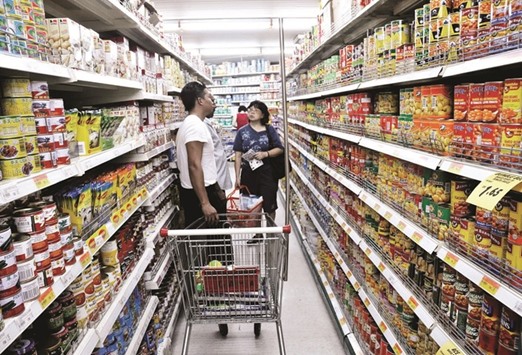After more than a year of disinflation, price pressures are quickly mounting across Southeast Asia as fuel costs rise, putting central banks on watch after years of policy easing.
In Malaysia, consumer prices rose at the fastest pace in almost a year in January and economists see that as closing the door on another interest-rate cut this year even though the economy could do with more stimulus. From Singapore to Thailand, central banks are bracing for faster inflation.
The recent spike has been mainly caused by oil prices, which have surged 25% in the past six months. In a region where countries like Indonesia have been prone to high inflation in the past, and currencies are vulnerable - notably in Malaysia - central banks will need to monitor closely for any signs that rising fuel costs are spreading more broadly to prices in the economy.
“The obvious risk is that complacency leads central banks to miss inflation pressure spreading to the spending-driven CPI components, forcing more aggressive rate hikes and greater growth slowdowns down the road,” said Timothy Condon, head of Asian research at ING Groep NV in Singapore.
The pick-up in inflation isn’t unique to Southeast Asia as higher commodity prices drive up costs across Asia. China’s factory prices have snapped years of deflation, with some analysts saying this is the hidden side of the global reflation trade.
For now, core measures of inflation in Southeast Asia - which exclude volatile items such as energy and food costs - remain contained, taking the pressure off central banks to take immediate action to tighten policy. In Malaysia, where inflation reached 3.2% in January, the core measure was at 2.3%. The government’s projection is for headline inflation to average 2% to 3% this year.
“We’ve had a big swing from really depressed numbers,” said Sean Callow, a senior strategist at Westpac Banking Corp in Sydney. “Until there’s evidence that core inflation is on the rise and wages up with it, I don’t think we’re going to have any inflation dynamic going on in the region.”
Malaysia’s central bank kept its benchmark interest rate unchanged at 3% yesterday, in line with the forecasts of all but one of the 17 economists surveyed by Bloomberg. Bank Negara Malaysia said headline inflation will remain “relatively high” in the first half of the year and then moderate, while core inflation is expected to “increase modestly.” The outlook for inflation is dependent on global oil prices, which remain uncertain, it said.
Inflation will probably accelerate to 4% in February, and average 3.5% this year, up from a previous forecast of 2.5%, according to Mohamed Faiz Nagutha, an economist with Merrill Lynch Asia Pacific Ltd in Hong Kong. After surprising the market with an interest-rate cut in July last year, Mohamed Faiz is predicting the central bank will be on hold for the rest of the year.
“We do not expect BNM to react to these spikes in headline CPI and rather focus on measures of core inflation,” he said.
Malaysia’s ringgit was little changed at 4.45 against the dollar as of 5 pm in Kuala Lumpur, taking its decline in the past month to 0.6%.
The Philippines, which had the fastest economic expansion in Southeast Asia last year, may be the first country in the region to tighten monetary policy this year, according to economists surveyed by Bloomberg. Inflation is running at the fastest pace in two years and the currency is the worst performer in Asia this year, down 1.1% against the dollar.
“The Philippines has been seeing strong growth, so greater scope for inflation pass-through,” said Khoon Goh, the Singapore-based head of Asia research at Australia & New Zealand Banking Group Ltd.
In Singapore, consumer prices rose for a second month in January after almost two years of declines, while a government report on Wednesday showed a surprise slowdown in Thailand’s inflation in February to 1.4%.
Aside from the Philippines, most of the economies in Southeast Asia are growing below par, which supports calls for more policy easing. Growth in Malaysia slowed to 4.2% last year from 5% in 2015, while Indonesia’s economy expanded 5% in 2016, below the government’s goal of 7%.
“The inflation outlook across the region is one that things will start picking up,” said Rahul Bajoria, an economist at Barclays Plc in Singapore. “What we need to watch is second-round impacts of higher fuel inflation and the core inflation” measures, he said. “If that was to start picking up, then I think we’ll see central banks becoming a bit more cautious about the inflation outlook.”

In Malaysia, consumer prices rose at the fastest pace in almost a year in January and economists see that as closing the door on another interest-rate cut this year even though the economy could do with more stimulus. From Singapore to Thailand, central banks are bracing for faster inflation.


